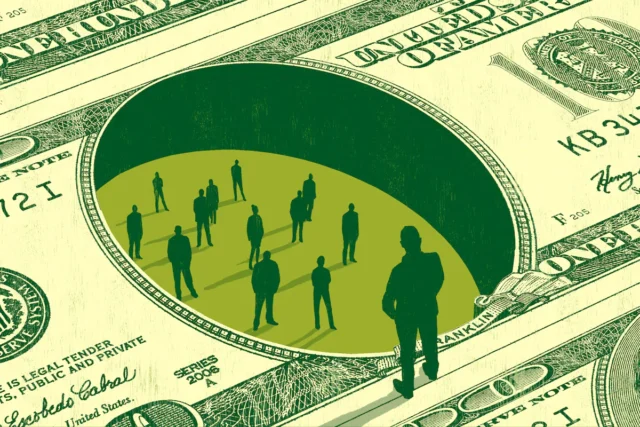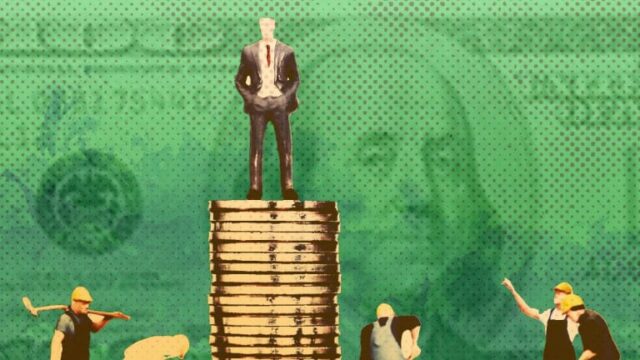
Income inequality has been an increasingly prominent topic in the United States for years. Many believe that the rich are getting richer while the poor are getting poorer, an idea supported by the fact that just 1% of Americans control an increasingly disproportionate amount of the country’s wealth.
In this article, we’ll take a closer look at income inequality in the U.S. and its potential effects on society and the economy. Keep reading to learn more.
What is Income Inequality?
Income inequality is the unequal distribution of household or individual income across the various participants in an economy. It is often measured by examining the share of income or wealth held by the richest households or individuals in an economy. These individuals make up the top 1% of Americans and take home nearly 20% of all income, according to a recent report from the Congressional Budget Office. That’s up from 10% in 1979.
Incomes for most Americans have stagnated since the 1970s, while incomes for those at the top have exploded. The average income for the bottom 90% was about $31,000 in 2013, while it was more than $1 million for the 1%.
The concentration of wealth at the top has been increasing for decades, thanks to a mix of technological change, globalization, and changes in tax policy. While there have always been disparities in wealth, they have grown significantly over the past few decades.

How Has Income Inequality Changed Over Time?
Income disparity has been on the rise since the 1970s. The richest 1% of Americans have seen their incomes grow at a much faster rate than the rest of society, while the poorest 50% have actually seen their incomes decrease. Several factors have contributed to this growing disparity. One is technological change, which has resulted in increased demand for skilled labor and decreased demand for less-skilled labor. This has led to a widening gap between high- and low-income earners.
Additionally, changes in tax policy and deregulation have helped benefit wealthy Americans at the expense of others. And finally, there has been a general trend toward increasing the concentration of wealth, as those at the top acquire more and more assets.
This trend is troubling because it leads to increased social stratification and can hinder economic growth overall. There are proposals to address this issue, such as raising taxes on the wealthy or increasing minimum wage levels, but they face significant opposition from conservatives who argue that they will hurt economic growth.

Is There a Limit to How Much Income Inequality is Sustainable?
There is no definitive answer to whether is a limit to how much income disparity is sustainable, as this depends on a variety of factors specific to each country. Generally speaking, though, economists agree that too much income disparity can have negative consequences for economic growth and social stability.
Many believe this level of inequality is not sustainable in the long term, as it can lead to political and social unrest. When wealth becomes too concentrated in the hands of a few, it can lead to corruption and a lack of opportunity for others. This can result in reduced economic growth and social instability.
It is important to note that there is no one ideal level of economic inequality, as this depends on factors such as the size of the country and its demographics. In some cases, a moderate level of inequality may be necessary to spur innovation and economic growth. However, if our income disparity becomes too extreme, it can have harmful consequences for society as a whole.
If we want to restore economic growth and create a more equitable society, we need to address income disparity head-on. We can do this by raising the minimum wage, investing in education and training, and creating more jobs that pay well. These are all policies that would help narrow the income gap and boost our economy at the same time







